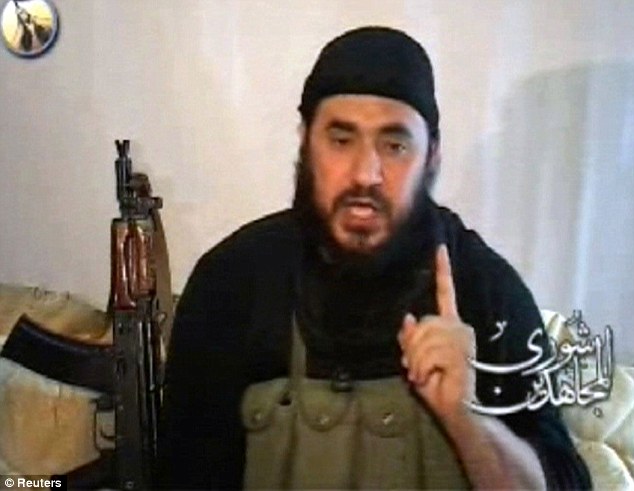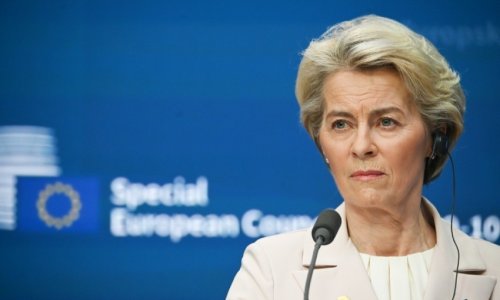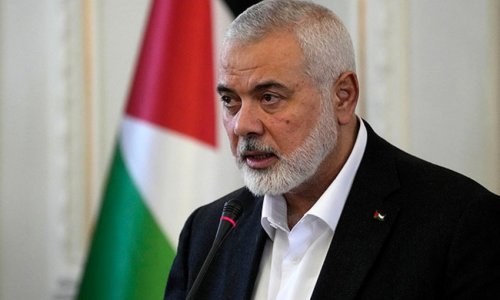Surrounded by banks of video monitors carrying live feeds from a fleet of drones, the hunters studied their screens intently.
For two weeks the team of veteran Special Forces soldiers and CIA analysts had tracked a silver car on its mundane trips around Baghdad. Today, however, the saloon was heading north-east out of the city.
Its passenger, Sheik Abd al-Rahman, spiritual adviser to America’s most wanted man, changed vehicles twice and was now in a pick-up, barrelling down a dirt road just outside the tiny village of Hibhib, 30 miles from Baghdad.
The pick-up turned into the driveway of a two-storey house all but obscured by a canopy of palms. Rahman climbed out and the truck drove away.
It was 4.55pm on June 7, 2006. The Americans had been waiting nearly three years for this. Every eye in the operations centre at Balad Air Base just outside Baghdad was fixed on the grainy image of the small house. A solidly built figure dressed in black emerged from the building, met Rahman and took him inside.
‘Wow!’ said General Stanley McChrystal, head of the US Special Forces in Iraq. ‘That’s Zarqawi.’ The Americans finally had in their sights the fanatic whose barbarism had caused even Al Qaeda to denounce him – a man who created the organisation we now know as ISIS.
Four years earlier, Abu Musab al-Zarqawi had been catapulted from relative obscurity to the top of the terrorist heap. The former petty criminal had been radicalised in his native Jordan and fought in Afghanistan, where he’d met Osama Bin Laden. But when he was linked to the murder of an American diplomat in Jordan’s capital Amman in October 2002, the Bush Administration began taking a keen interest in him – the White House was searching for connections between Al Qaeda and Saddam Hussein.
If Baghdad had played even a minor role in supporting Al Qaeda’s 9/11 attacks, the US’s case for an invasion of Iraq would be clear-cut. Could Zarqawi be the link? After all, he had received medical treatment in one of Baghdad’s state-run hospitals, and after the start of the Afghan offensive in 2001 he had fled from the training camp he set up with Al Qaeda help in the west of the country to Iraq.
Instead of joining Bin Laden in his cave complex at Tora Bora, he’d spent time at the remote Iraqi base of the Taliban-like movement Ansar al-Islam, whose leaders had a fondness for experimenting with poisons such as cyanide and ricin. Didn’t this suggest a link to Saddam, whose interest in chemical weapons in the 1990s was well documented?
The White House prodded a sceptical CIA. According to Nada Bakos, the agency’s Zarqawi expert: ‘They were asking us to prove a negative: to prove to them that Zarqawi wasn’t part of Al Qaeda and wasn’t working with Saddam. And when we tried to do that, the answer would be, "So what? All those people have the same agenda, so who cares?”’
Ignoring CIA reservations, US Secretary of State Colin Powell gave a speech making the case for war in 2003, wrongly declaring that Zarqawi was the link between Iraq and the 9/11 plotters.
In deciding to use the unsung Zarqawi as an excuse for launching a new front in the war against terror, the White House had unwittingly made him an Islamist superstar. Zarqawi responded by turning all of their warnings about terrorism into reality.
After the fall of Baghdad in April 2003, with the moral underpinnings of the White House’s war effort collapsing like rotten timbers, Zarqawi unleashed a wave of bombing attacks in Iraq aimed at stirring hatred between Sunnis and Shias while at the same time striking at America. In January 2004, ten months after his arrival in Baghdad and with the insurgency flourishing, he sent a message to Bin Laden asking a favour. His organisation, though small, had been behind nearly all the major terrorist attacks in Iraq but he could accomplish much more with Al Qaeda’s official endorsement and resources, he argued. ‘All that we hope is that we will be the spearhead, the enabling vanguard, and the bridge on which the Islamic nation crosses over to the victory that is promised.’
On May 10, Zarqawi sent a message to the world in the form of a grainy six-minute video. Dressed in black, his face concealed by a ski mask, Zarqawi was seen towering over a bound figure in an orange jumpsuit sitting in front of him.
American Nicholas Berg, a would-be entrepreneur who had gone to Iraq to tout for contracts for his electronics repair business, showed no sign of awareness of what was about to happen to him.
‘Nation of Islam, great news!’ said Zarqawi, flanked by four of his men carrying rifles. ‘The signs of dawn have begun and the winds of victory are blowing.’
He continued for several minutes, before warning: ‘You will see nothing from us except corpse after corpse and casket after casket of those slaughtered in this fashion.’
With that, he pulled a long knife from a sheath and pounced on Berg. As the other men held the prisoner, Zarqawi grabbed his hair with one hand and with the other began to cut at his throat. In the final frames, one of Zarqawi’s companions lifted Berg’s head and held it aloft like a trophy, then set it gently on the victim’s back.
The appalling video became an instant phenomenon and Zarqawi’s admirers gave him a new nickname – the ‘sheik of the slaughterers’.
In the following months, Zarqawi’s men carried out dozens of killings, many of them recorded, including the beheadings of a Bulgarian truck driver, a South Korean translator, and an Egyptian contractor.
Lebanese kidnap victims, who were freed through ransom, told stories of poor immigrant labourers who lacked ransom money being killed slowly with electric drills, or other victims being held down while their tongues were hacked out.
In July 2004, Washington increased the reward for information leading to Zarqawi’s capture from £6 million to £15 million – the same bounty offered for Bin Laden. Zarqawi celebrated his rise in the most-wanted rankings with another video. He talked about famous Muslim warriors, implying his own place in the chain of great men, before making an impassioned plea for Muslims from around the world to join him.
Furthermore, Bin Laden gave him his blessing, announcing in an audiotape broadcast on Arab news channels that ‘mujahed brother Abu Musab al-Zarqawi is the emir of the Al Qaeda for Jihad Organisation in the Land of the Two Rivers’. By co-opting Zarqawi, Al Qaeda could share the credit for his successes.
But Zarqawi’s brutality was making him enemies in Iraq, which manifested itself in a flow of intelligence to the CIA.
One tip was that he was to be driven from Fallujah to Ramadi on February 20, 2005, so a surveillance drone and teams of commandos were positioned along the route to watch. In mid-afternoon, the drone locked on a pick-up truck as it headed to a farmhouse surrounded by dense palm groves, where one figure leapt out.
A technical glitch with the drone’s camera prevented an instant strike, and the delay allowed the men to escape, but the first soldiers on the scene made an extraordinary find. Resting on the seat of the truck was Zarqawi’s laptop.
It took weeks to break the encryption. Most of the addresses, plans, and phone numbers were obsolete. Yet the laptop held material of inestimable value: it was the closest that analysts had come to being able to peer inside Zarqawi’s brain.
(dailymail.co.uk)
www.ann.az
Follow us !











